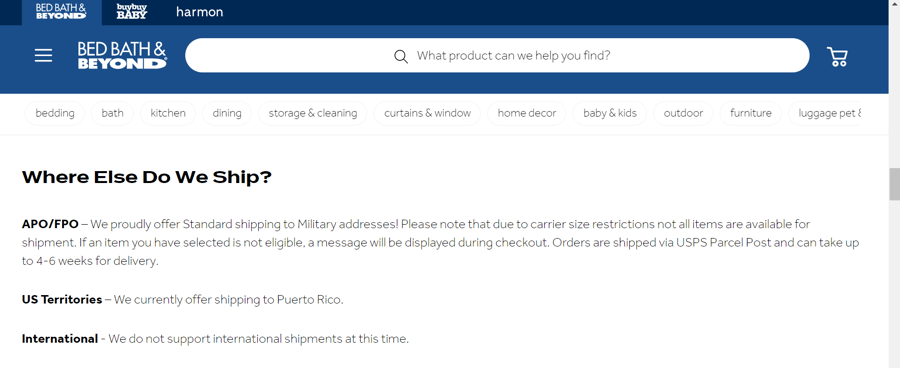
Running an eCommerce shop is a complicated process that involves paying attention to many things simultaneously. One of the most important things you need to focus on is shipping. After all, it’s difficult to keep a business going if you cannot consistently ship products out to your customers on time.
A solid online store shipping policy can make most, if not all, of your shipping-related processes and workflows progress more seamlessly.
That’s why it’s well worth gathering as much information as possible on how to draw up these policies. We’ll take you through the seven best practices associated with online store shipping policies.
But before exploring the best practices, let’s establish what exactly a store shipping policy is.
First Things First: A Primer on Online Store Shipping Policies
With every year that passes, more and more consumers turn to online shopping. In fact, according to Statista, as of 2021, online sales surpassed 5.2 trillion US dollars and look set to continue climbing from there.
This tells us that it’s vital for your eCommerce business to have strong policies in place for handling and interacting with these online shoppers. This holds true for the rules surrounding your shipment of their purchases, which should be detailed in your online store shipping policy.
So, your policy is a guide that contains all the rules that govern your shipping.
As we just mentioned, the volume of site visitors (and resultant customers) you can expect to see is always increasing. That’s why it’s vital to ensure that the quality of your shipping policy remains superb because, if your store policies can’t keep up with your customers’ needs and demands, you’ll lose their patronage.
7 Tips for Drafting the Perfect Online Store Shipping Policy
Now, we’ll show you exactly how you can keep your customers as happy as possible with a top-class online store shipping policy. The following tips will help you keep your customers as satisfied as possible.
Tip #1: Tell your customers how long shipping will take.
It’s very important to always be clear, upfront, and honest with your customers. If you expect their item to arrive in five to eight business days, for example, you’d never want to promise or guarantee that it would only take five days. In the event of any delays, your customers will feel that you lied to them, which may result in them shopping elsewhere in the future.
Of course, driving your customers away (and toward your competitors) is the last thing you want.
To avoid that scenario, you must give accurate, realistic shipping-time estimates for every shipping option that you provide. Some may take longer than others, and that’s alright — as long as you’re upfront about it and clearly state it to your customers.
It’s also necessary to highlight the factors influencing your shipping times. For example, many businesses experience delays around Christmas and other major holidays. If you fall under that category, make your customers aware of this in your shipping policy.
Additionally, it’s a good idea to break down your total shipping time into steps. This helps your customers track how close their order is to completion and makes it easier for them to figure out whether they should reach out to you about shipping times. In these breakdowns, you’ll want to include order processing time, packaging time, and time in transit.
Tip #2: Detail local and international shipping options.

Source: Bed Bath & Beyond
Being clear from the start about the options available for people living anywhere in the world is vital for a few key reasons, which we’ll take you through below.
Firstly, it’s a great way to increase the overall efficiency of your business and its approach to customers. That’s because greater clarity about international shipping stops customers from reaching out to ask about delivery times in their specific country or region, ensuring your customer service agents have fewer customers to help each day.
Next, it provides a degree of personalization. Let’s say you’ve got a lead in Australia that’s very excited about your products, but they’re unsure whether you could ship to them. If they then discover that you’ve detailed exactly how long it takes for items from your shop to reach Australia, they’ll feel that you care about their patronage.
Aside from encouraging more purchases, this is a great way to show your customers that you value them as individuals.
Providing options that distinguish between local, domestic, and international shipping shows that you’re not a one-size-fits-all company. This is a good way to prove that you’ve got your customers’ needs at heart.
Tip #3: Be clear about returns and exchanges.

Source: Macy’s Customer Service
While they’re never going to be the ultimate goal behind eCommerce sales, returns and exchanges do happen.
This is why we can’t emphasize enough how important it is to detail your exact policies surrounding returns and exchanges in your shipping policy.
One thing to mention is whether or not your company does refunds. If your company offers refunds, it’s important to state whether shipping is included. In most cases, the costs of shipping returns fall to the customer, but you shouldn’t expect your customers to assume as much. Instead, clearly state it.
It’s also worth your while to include information about how you settle disputes. A PandaDoc settlement agreement template can help you determine the exact wording you want to use.
Tip #4: Provide options.
Just like providing a wide array of choices is a key part of a winning omnichannel strategy, giving your customers lots of options (and providing details about each) makes for a significantly better online store shipping policy.
It also lets you adapt to multiple types of customers’ needs. For example, you could provide slower free shipping alongside express delivery that comes with a cost. This would help you cater to the needs of shoppers who want their items as quickly as possible and those who are very keen not to pay for shipping.
That way, you avoid driving away potential customers to your competitors who offer a wider variety of shipping options.
Tip #5: Specify what you need from your customers.
Customers don’t want to have to contact you just to figure out what you need from them. To spare them the trouble and lighten the workloads of your customer service agents, you should be very clear in your online store shipping policy about what’s required of customers.
For example, let’s say you need your customer’s card details to process their payment and a signature from them to finalize a document. If that’s the case, you’ll want to inform them upfront that the process isn’t complete when they’ve provided their card details.
This helps with setting realistic expectations. It also tells customers what information they need to have ready and how much time they need to set aside.
You might also need customers to sign waivers, depending on the products you ship and the countries you ship them to. If that’s the case, make sure you use a waiver agreement template that clearly outlines what your customers are signing and why.
Along with helping customers trust you more easily, this also encourages them to sign faster. That saves you time and stops customers from backing out of purchases that they’d otherwise have made confidently.
Tip #6: Always aim for easy scannability.
Sure, there will always be customers who take the time to read and process every last word in your policies. However, not everyone has the time or patience to do this.
That’s why you’ll want to create an online store shipping policy that’s detailed and easy to scan.
It’s important to strike this balance. Including too much information makes it difficult for customers to find what they’re looking for at a glance. But at the same time, including too little information leaves your policies too vague to be useful.
A useful tip to help you aim for scannability is adjusting the formatting. We recommend using bold, italics, and color coding to make it as easy as possible to direct readers’ eyes to where they need to go. Likewise, bullet points help keep things concise and focused.
While short sentences are highly useful in limiting the total length of your policy document, they shouldn’t be your only choice. Varying sentence length improves readability.
Also, it’s helpful to think about the keywords your customers will search for. For example, if customers are looking for “teamwork,” a sentence containing “collaborative work” won’t appear. It’s important to optimize for your customers’ preferred keywords and buzzwords without relying too much on jargon.
Tip #7: Ensure your policy is always up to date.
All kinds of changes and developments, both within and outside your company, can affect your policies.
For example, if you’ve scaled your eCommerce business up recently, what used to qualify as a “large order” might not anymore. You might have started to offer new, bigger bundles as well. Or perhaps your newly scaled business can actually process shipments faster.
When you’re updating your policy, it’s helpful to consider your process as a pyramid. Here’s a visual representation of what we mean:

Source: Scalar
In particular, the “Why do I need to do this?” stage must be part of your overall store shipping policy. What we mean by that is that your policy should detail when and why it was last updated.
Also, if an online store hasn’t updated its policies in a long time, you’d be left wondering why that is.
So it’s good practice to explain what sorts of situations lead to a change in your policy, as well as how often you review and update the policy. This reassures customers that you’re in touch with both the realities of your business and the market alike.
Parting Thoughts
Your online store shipping policy must be clear, concise, and comprehensive.
Customers should come away from reading it with a new understanding of your policies. They should be left with answers, not questions. Also, if they want to scan for a particular policy, they should be able to find it with ease.
But, at the same time, a super long policy does nothing for you or your customers. Tell them exactly what they need to know clearly, without using extra words to do so.
Lastly, the policy should cover every relevant point. This improves the customer experience and helps your customer service team do their jobs better.





Leave a reply or comment below